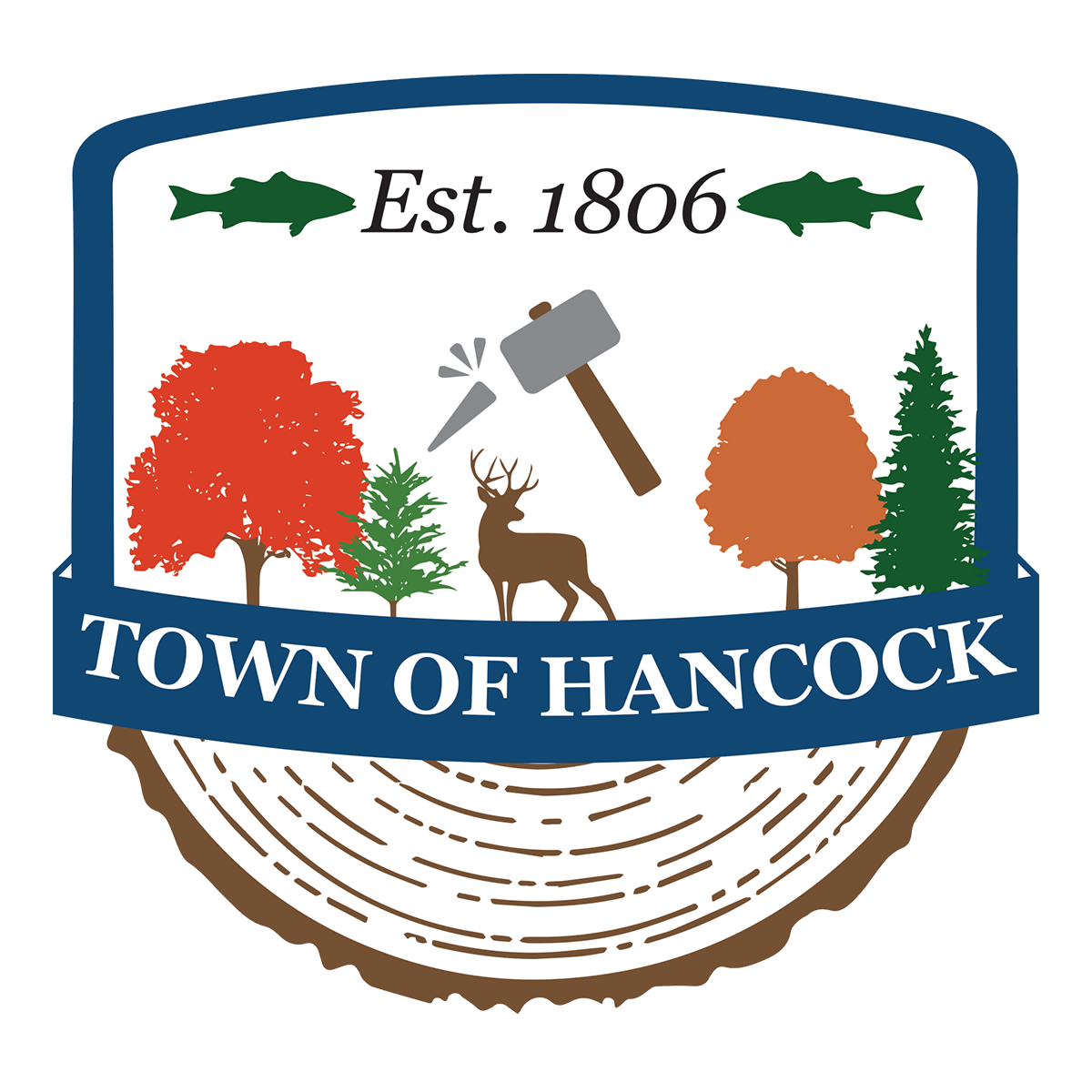
History
The Town of Hancock is "The Gateway To The Delaware River". The East and West branches of the Delaware River converge at Hancock from opposing directions at the base of Point Mountain to form the headwaters of the Delaware River which eventually flow to the Atlantic Ocean. Atop Point Mountain is a mausoleum that was built by Dr. Lester E. Woolsey in the 1940's to house his remains. The mausoleum lies empty today. Dr. Woolsey was buried there only a few years, until the structure could not be properly protected and all the bodies that were entombed there were removed.
The Delaware river, along with the many streams, lakes and ponds that surround Hancock are teeming with brook and brown trout, perch, bass, bullhead and eel providing what many call... "the best fishing in the United States." The river also provides summer passage for canoers and rafters "running the rapids" to Equinunk, Skinner's Falls, Fishes Eddy and points as far south as Port Jervis and New Jersey.
In the 1960's, New York Route 17 was designated most scenic highway in the nation and thousands of people ventured to the Hancock area each year to marvel at the Autumn foliage which is usually is at its peak around the first week of October. Autumn is closely followed by large game hunting season in November. Hunters from as far away as 500 miles come to Hancock to bag their trophy white tail deer. Many Black Bear have also been taken in the Hancock area in recent years as well as pheasant and other small game. The Spring time of the year also yields a generous amount of deliciously sweet maple syrup and maple butter. Maple syrup from Hancock is shipped all over the world and rivals the famous Vermont Syrups.
Built in the early 1930s to link Port Jervis with the town of Hancock, Route 97, which begins its journey at Hancock, has been designated "the most scenic highway in the East." Hancock is "The Gateway to The Upper Delaware Scenic Byway"
The Town of Hancock is comprised of many villages and hamlets, largest of which is the Village of Hancock. Smaller Hamlets consist of Cadosia, Harvard, Peakville, Centerville, Readburn, Chiloway, Pea Brook, French Woods, Lordville, East Branch, Fishs Eddy, Goulds & Stockport. The town is 161.8 square miles in size with 3,449 people living in 1,390 households. The median income for a household in the town is $30,449.
Spring finds the town's area golf courses in full swing with golfers converging from all parts of the world to play on either of the area's 2 public courses, one of which was designed by legendary golf course architect, Robert Trent Jones. Both courses offer panoramic views and challenging holes.
The main industries in the town of Hancock are timber and stone. Hancock was once home to Becton Dickenson. More disposable surgical blades were produced in Hancock than anywhere else in the world. Hancock is home to many hardwood mills. Oak, maple, ash, cherry and other fine hardwoods are shipped all over the world to be fashioned into everything from book cases and chairs to baseball bats. World famous Louisville Slugger baseball bats were made from Hancock timber for over 85 years. The wood that made Babe Ruth's bat was carved from a tree that grew in Hancock. "Honest" Eddie Murphy, who played on The Philadelphia Athletics, Chicago White Sox and Pittsburgh Pirates, was born in Hancock on October 2, 1891. In 1918 his batting average was only 3 percentage points behind Babe Ruth. He was also the first batter to ever face Babe Ruth when The Bambino broke in as a pitcher for the Boston Braves. Eddie Murphy appeared in 3 World Series.
The area is also known world wide for its Bluestone quarries. Bluestone finds its way into everything from patios and fireplaces to sidewalk curbs in New York City. Hancock is "The Bluestone Capital of the World". Many New York City landmarks contain Hancock Bluestone such as The Empire State Building and the base of The Statue Of Liberty.
Winter brings record snowfalls, along with eager skiers that enjoy the several ski resorts located within 15-45 minutes of Hancock. Snowmobilers have reclaimed the old railroad beds in the area, creating literally hundreds of miles of trails.
Hancock is located only 2 1/2 hours from New York City, New Jersey and 3 hours from Philadelphia, making it a perfect summer or winter vacation retreat. Travelers and tourists alike take advantage of the dozens of restaurants, motels and B & B's that dot the village and surrounding local area.
